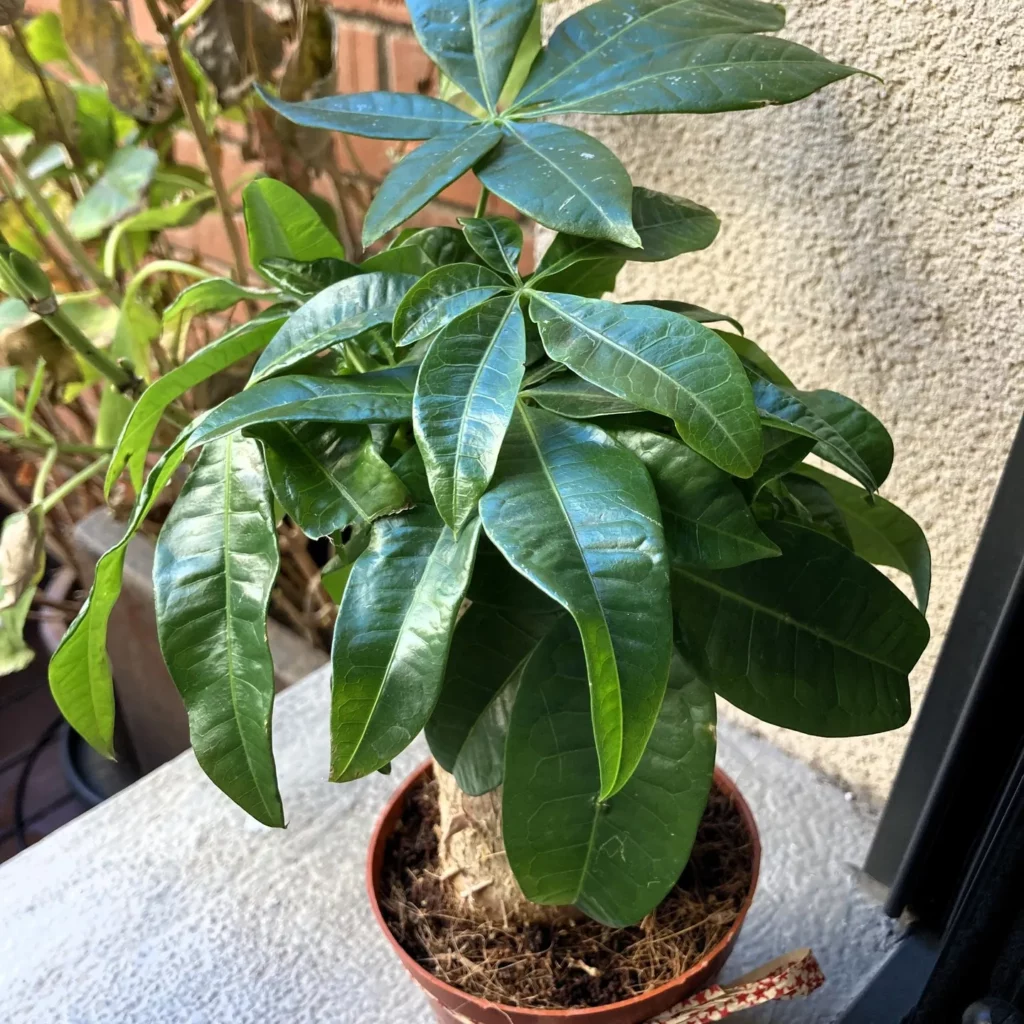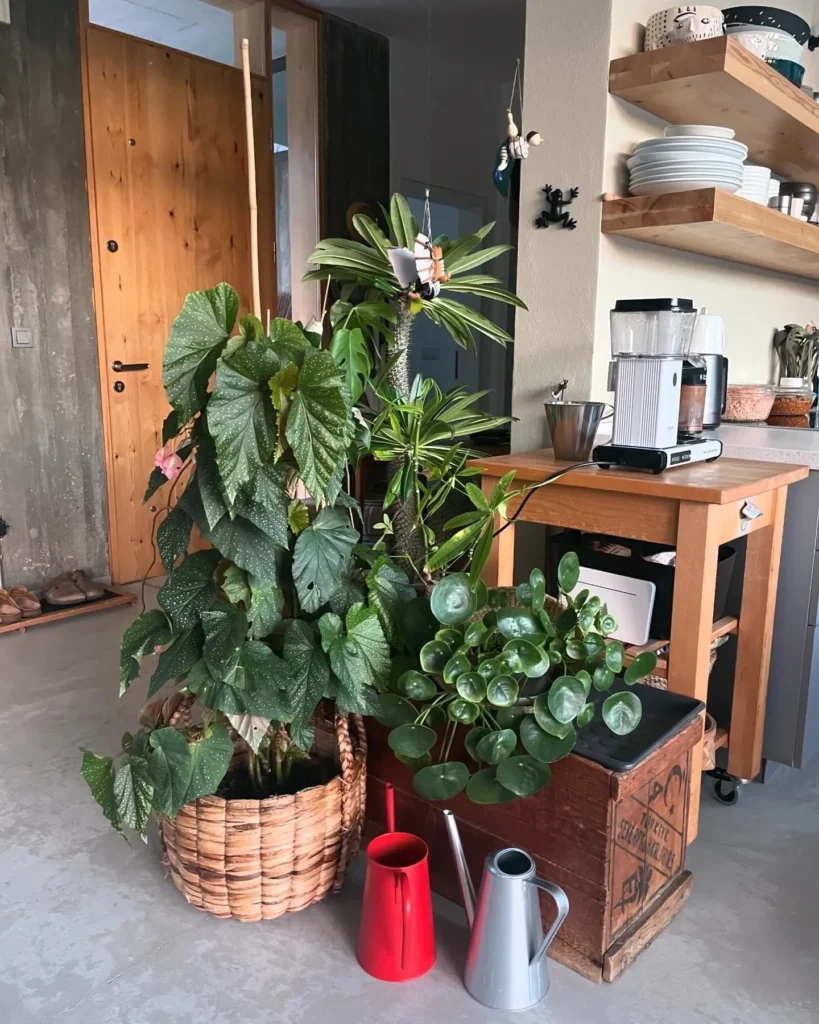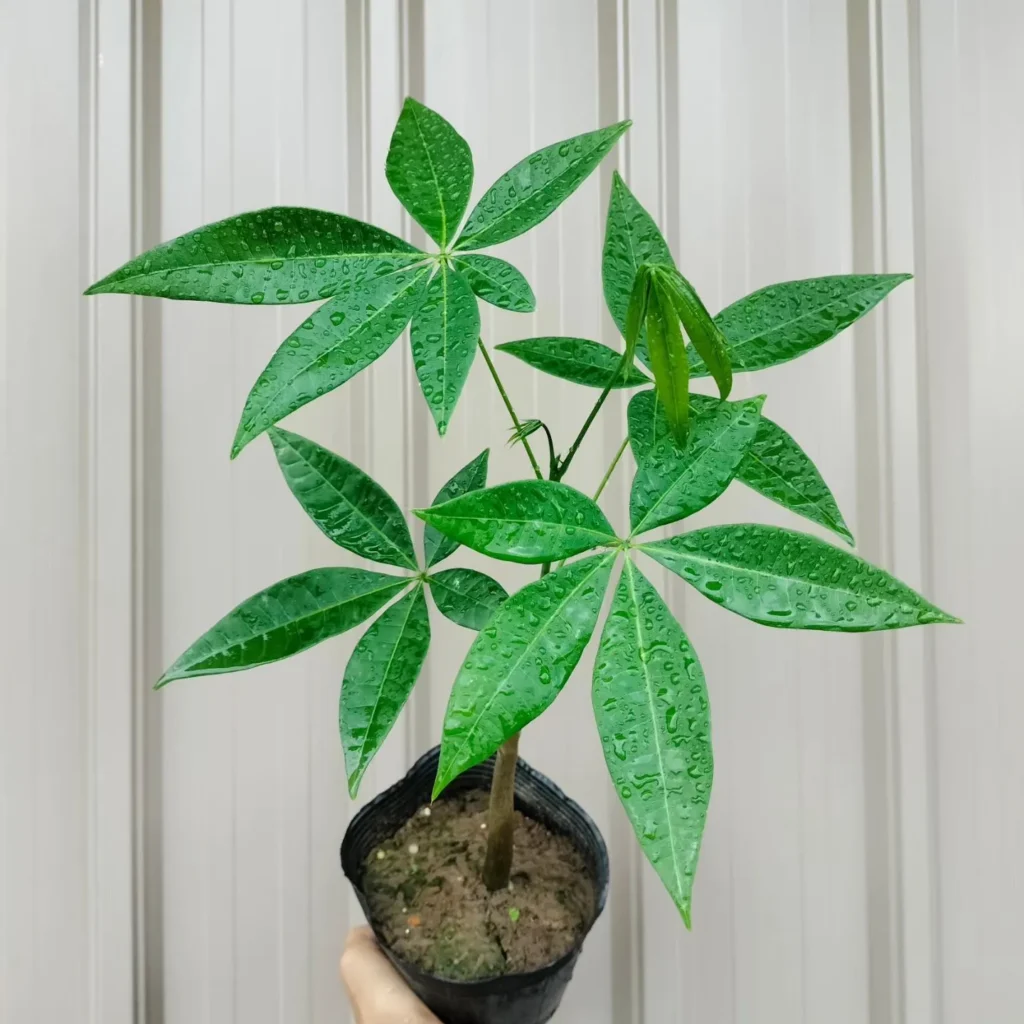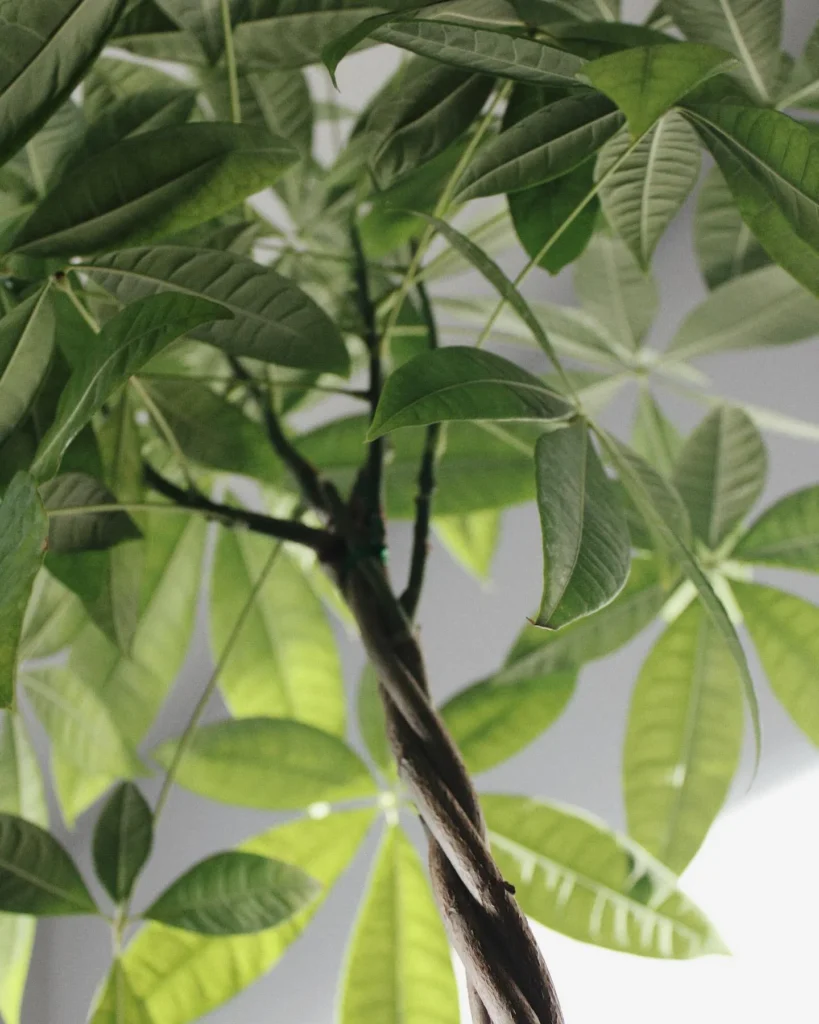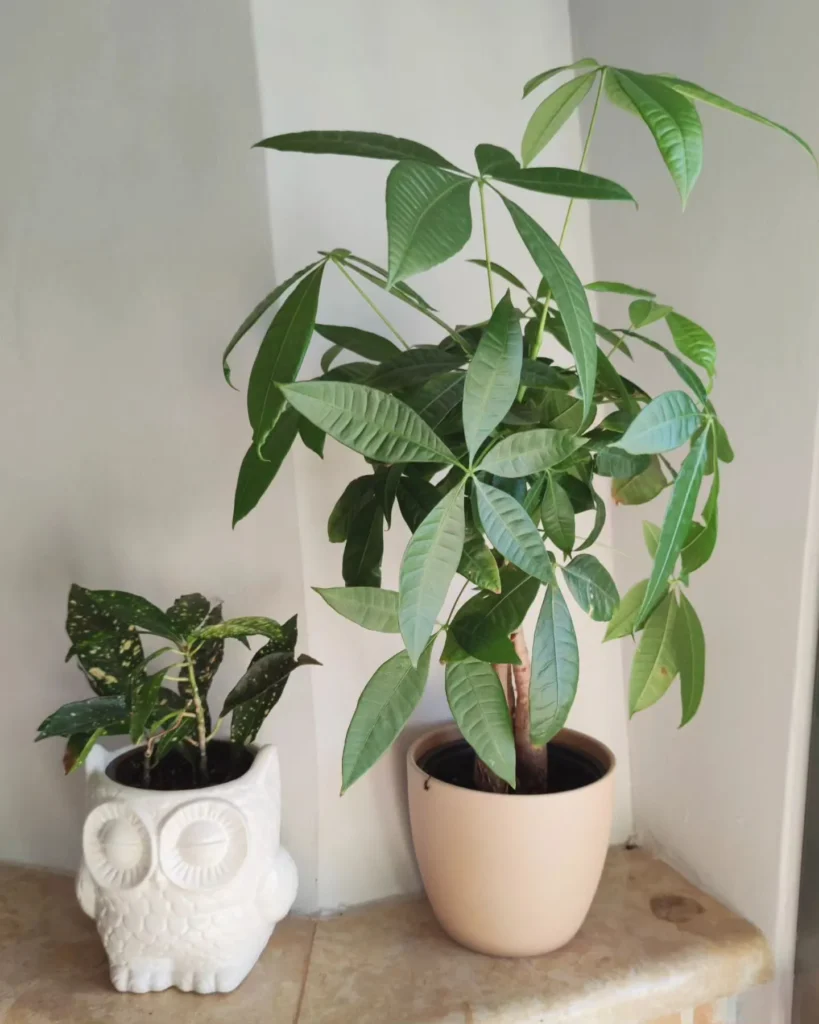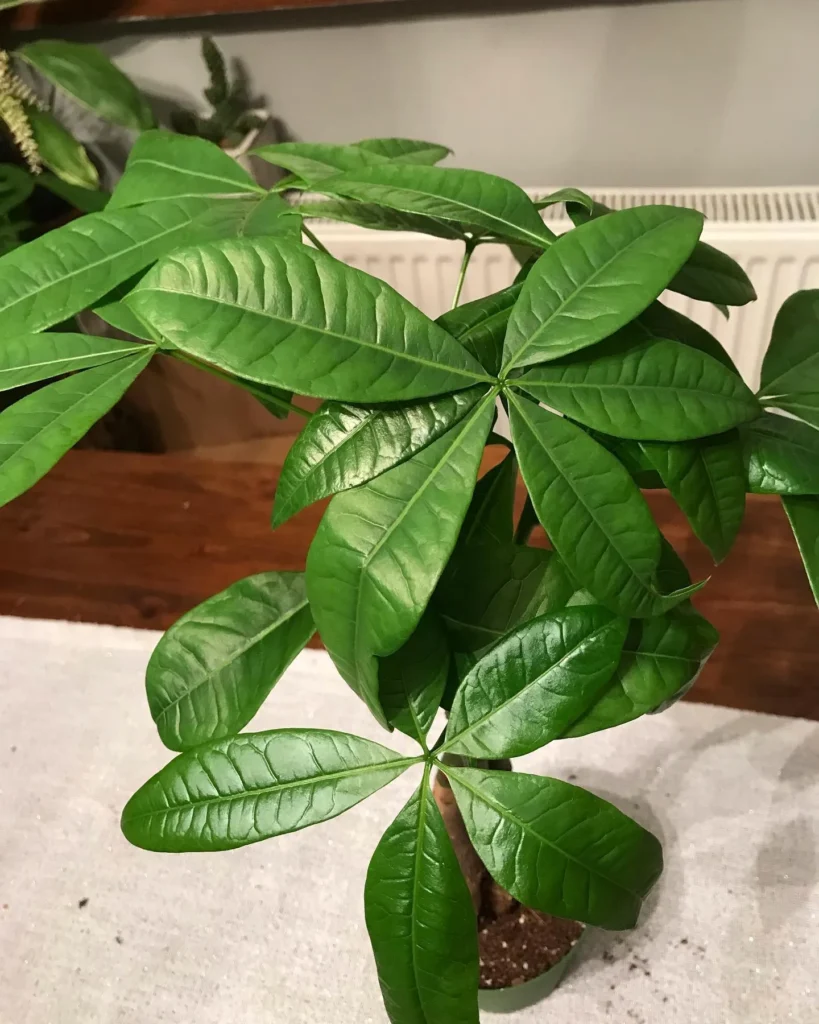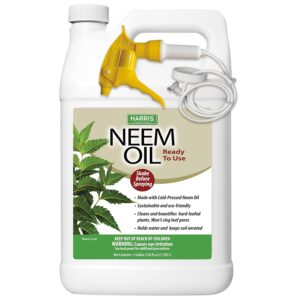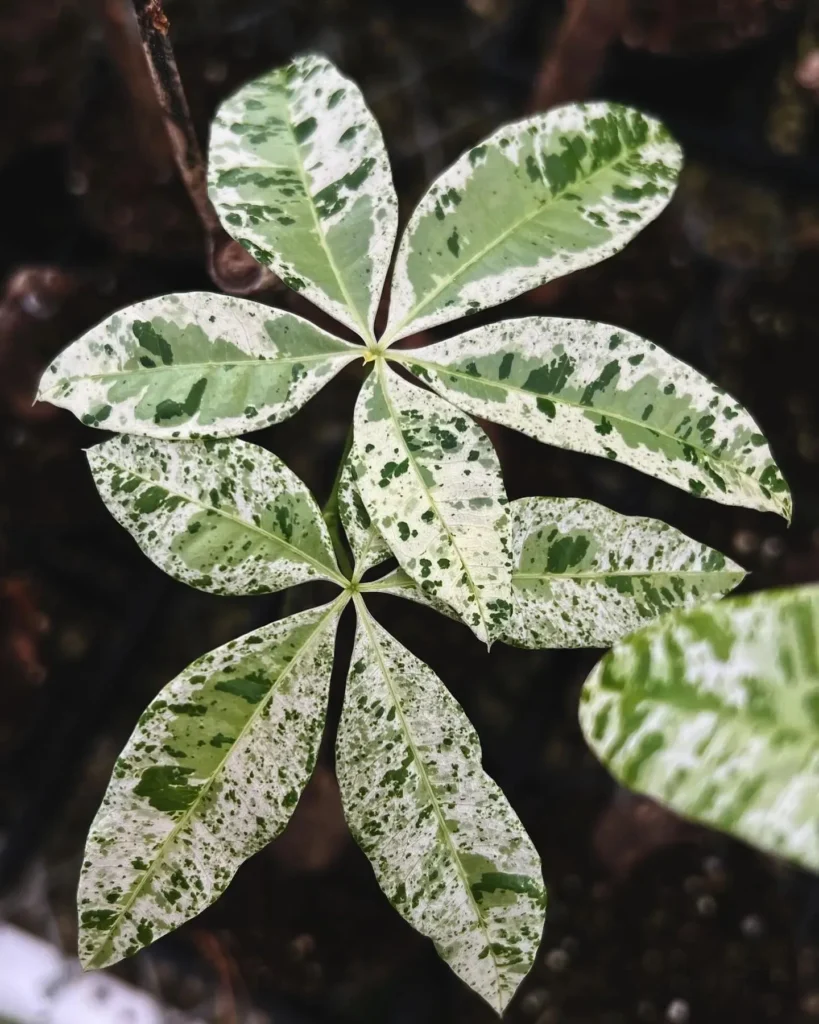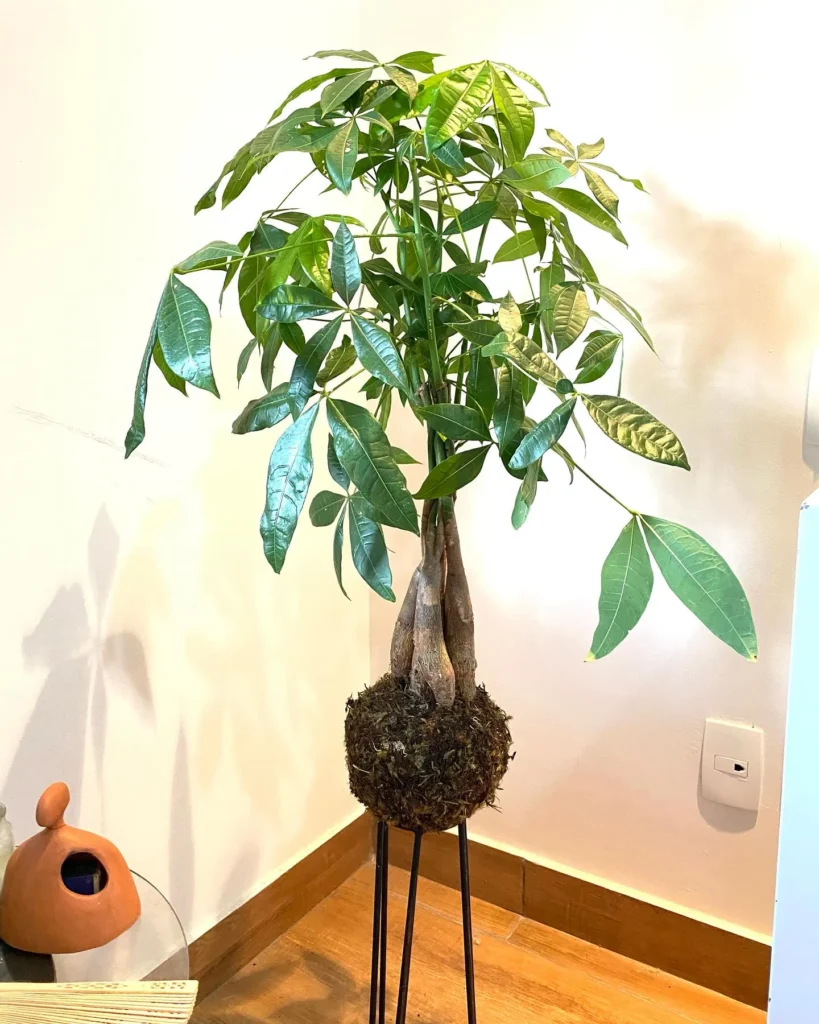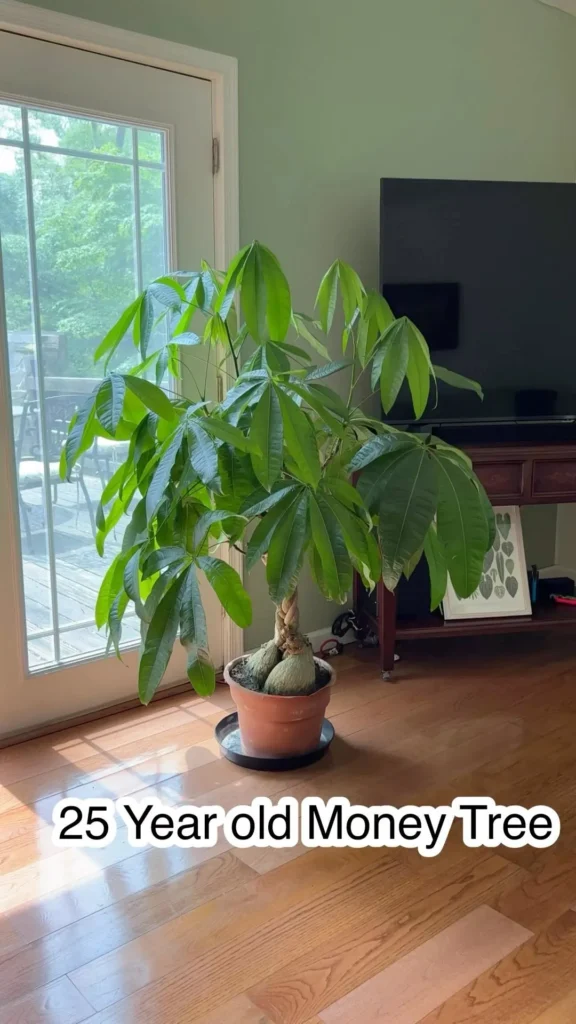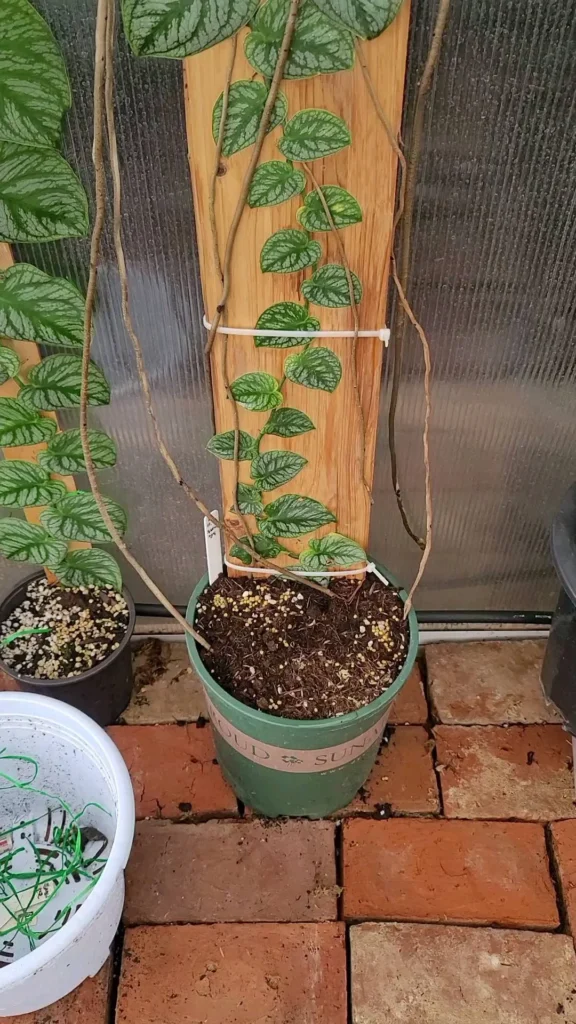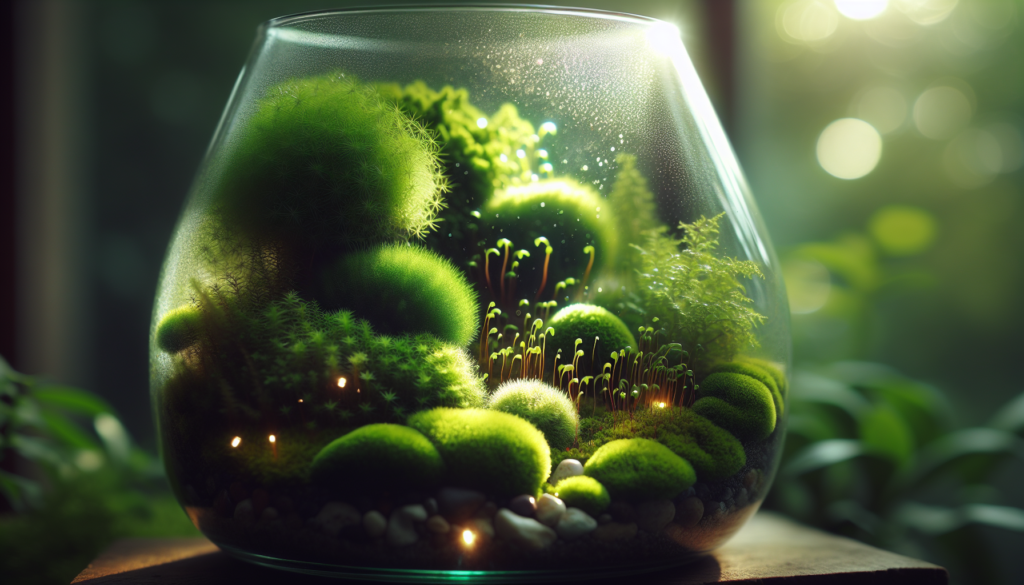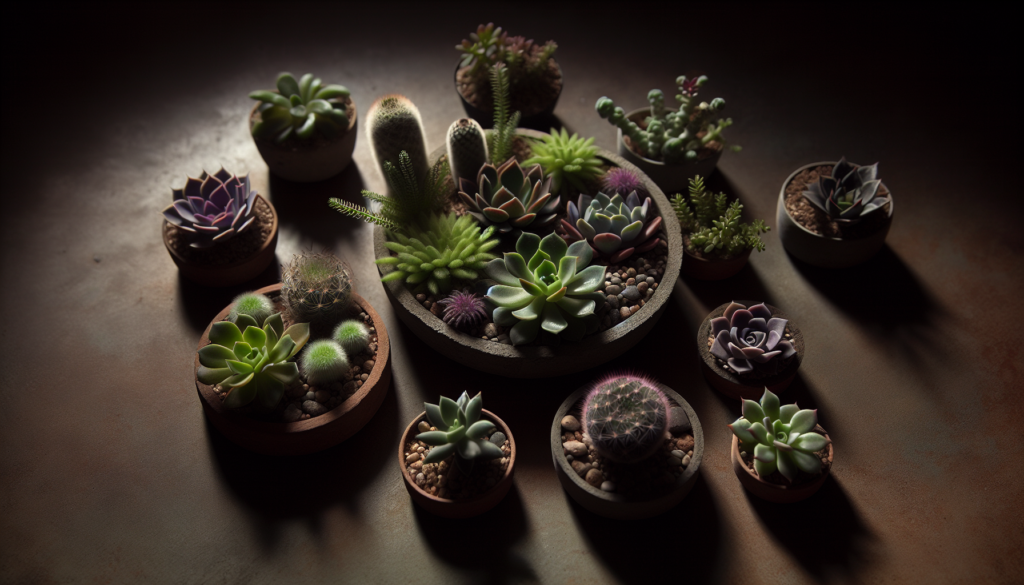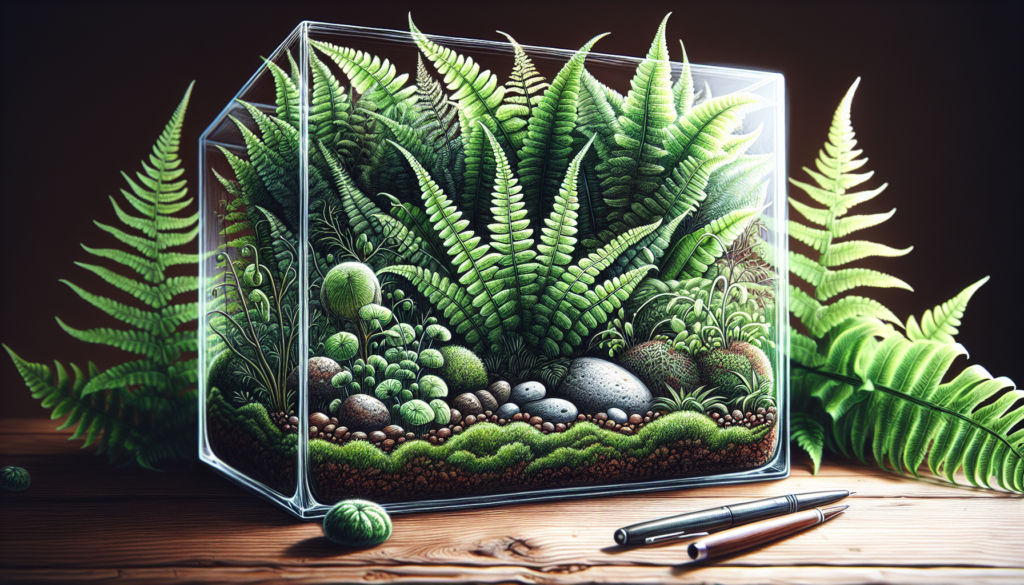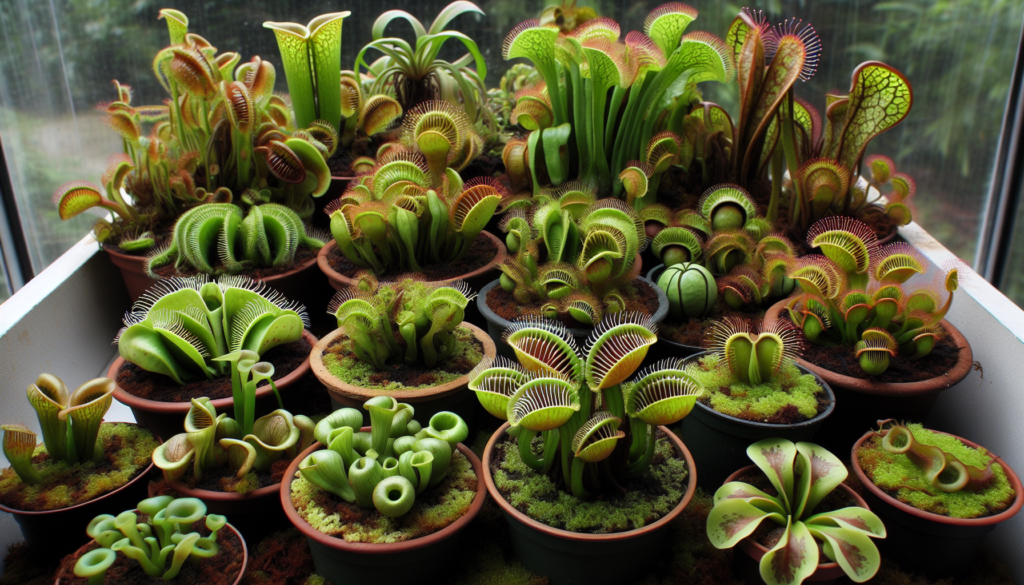Welcome to our guide on caring for money trees, the lucky indoor plants that bring prosperity and beauty to your home. Whether you’re a seasoned plant lover or a new plant parent, money trees are a fantastic addition to any indoor space.
Key Takeaways:
- Proper care is essential for the thriving of your Monstera adansonii, also known as the Swiss Cheese Plant.
- Indoor plant care, specifically for tropical plants like Monstera adansonii, requires attention to lighting, watering, and humidity.
- Regular maintenance, pruning, and propagation are important aspects of caring for your Swiss Cheese Plant.
- Through proper care and attention, you can enjoy the beauty and charm of your Monstera adansonii in your indoor space.
Why Are Money Trees Considered Lucky?
Money trees, also known as Pachira aquatica, are considered symbols of luck and prosperity. The belief in their lucky properties originated in the 1980s, primarily in Asia among feng shui practitioners. While the exact reasons for this association are not clear, many people gift money trees to bring abundance and good fortune. Having a money tree in your home is believed to manifest positive energy and attract wealth.
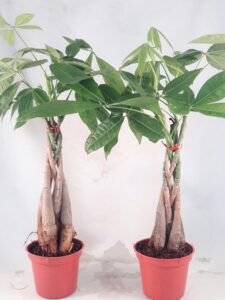
2 Live Money Tree Plants
$65.98
Basic Money Tree Plant Care
Taking care of a money tree is relatively easy. These plants are forgiving and can tolerate occasional neglect. With a few simple plant care tips, you can ensure that your money tree thrives and brings luck and prosperity to your home.
Light Requirements
Money trees prefer bright, indirect light. Place your money tree near a sunny window facing east, west, or south. However, it’s important to avoid direct sunlight, as it can scorch the leaves. If your money tree is not receiving adequate light, you can use artificial grow lights to supplement its lighting needs.
Watering Guidelines
When it comes to watering your money tree, it’s important to strike a balance. Water the plant thoroughly when the top inches of soil are dry. Allow the soil to partially dry out between waterings to prevent overwatering, which can lead to root rot. Remember to always use well-draining soil and pots with drainage holes to ensure proper water flow.
Temperature and Humidity
Money trees prefer a temperature range between 65 and 85 degrees Fahrenheit. Avoid extreme temperature fluctuations and drafts, as they can stress the plant. Increasing humidity levels can be beneficial for your money tree’s overall health. You can increase humidity by using a humidifier or grouping your plants together.
Temperature and Humidity
While money trees are relatively low-maintenance, they still benefit from occasional feeding. Use a balanced liquid fertilizer diluted according to the instructions during the growing season. However, avoid fertilizing during the dormant period. Fertilizing helps stimulate growth and maintains the health of your money tree.
Do I Need to Braid My Money Tree?
Money trees are often sold with braided trunks, but braiding is not necessary for their growth. The braided appearance is achieved by weaving together multiple plants during their flexible growth stage. You can choose to maintain the braided shape or let the plant grow naturally. Pruning can be done to shape and encourage new growth. If you decide to braid your money tree, gently weave the trunks together and tie them with a string. As the tree grows, continue the process.
Common Money Tree Problems
While money trees are relatively low-maintenance plants, they can still face a few common issues. Being aware of these problems and knowing how to address them can help ensure the health and longevity of your money tree.
Pests:
Neem Oil Spray for Plants
$24.99
Money trees can be susceptible to pests such as aphids and scales. These tiny insects can infest the leaves and stems, causing damage to the plant. To combat these pests, you can apply neem oil or appropriate insecticides specifically formulated for houseplants. Regularly inspect your money tree for any signs of pest infestation and take prompt action to prevent further damage.
Diseases:
Overwatering or incorrect watering practices can lead to root rot and other fungal diseases in money trees. It is crucial to ensure proper drainage in the pot and allow the soil to partially dry out between waterings. This helps prevent waterlogged conditions that can promote the growth of harmful fungi. If you notice signs of root rot, such as mushy or discolored roots, take steps to address the issue, such as adjusting your watering routine and improving the plant’s drainage.
Drooping and yellowing leaves may indicate a watering problem or pest infestation. It is important to address these issues promptly to prevent further damage and maintain the overall health of your money tree.
Where to Buy a Money Tree
Money trees can be purchased from various sources. Whether you prefer the convenience of online shopping or the personalized service of a local nursery, there are options available for everyone.
Swiss cheese plants have the potential to grow quite tall in their natural habitat. As houseplants, they may grow 1 to 2 feet per year under optimal conditions. Regular pruning and maintenance help control the size of the plant so that it remains manageable in your indoor space.
Online Plant Stores
If you’re looking to buy a money tree from the comfort of your own home, online platforms offer a wide selection and convenient delivery options. Some popular online plant stores where you can find money trees are:
- Amazon
- 1-800-Flowers
- Home Depot
These online platforms provide a range of money tree options to choose from, along with customer reviews to help you make an informed decision.
Local Nurseries
If you prefer a more personal shopping experience and want to support local businesses, consider visiting your nearest nursery. Local nurseries often have a variety of healthy money tree plants available, and the staff can provide expert advice based on your specific needs. Plus, you’ll have the opportunity to see the plants in person before making a purchase decision.
When buying a money tree, consider the size of the plant and the customization options available. Some online platforms and local nurseries offer different planter options, allowing you to choose a style that suits your home decor.
By buying a money tree from trusted sources, whether online or at a local nursery, you can add a touch of luck and greenery to your home while supporting businesses that specialize in plants and gardening.
Appearance of a Money Tree
Money trees, scientifically known as Pachira aquatica, are compact trees with a distinct appearance. They have slender trunks that widen at the base and narrower towards the canopy. The leaves are oblong and palmate, growing in bunches of five. Each leaf has a light green midrib and dark green foliage. Money trees are visually appealing, with their braided trunks and lush green leaves adding an aesthetic touch to any indoor space.
Potting and Repotting
Money trees, scientifically known as Pachira aquatica, are compact trees with a distinct appearance. They have slender trunks that widen at the base and narrower towards the canopy. The leaves are oblong and palmate, growing in bunches of five. Each leaf has a light green midrib and dark green foliage. Money trees are visually appealing, with their braided trunks and lush green leaves adding an aesthetic touch to any indoor space.
Light Requirements for a Money Tree
Money trees thrive when exposed to bright, indirect light. To create optimal light conditions, place your money tree near a sunny window that faces east, west, or south. However, it is important to avoid direct sunlight, especially during the hottest months. In their natural habitat, money trees are typically shaded by taller trees, so providing them with filtered or indirect light is ideal.
To promote even growth, rotate your money tree periodically, ensuring that all sides receive adequate light. This will prevent uneven growth and ensure that your plant remains healthy and vibrant.
Money trees are highly adaptable and can thrive in various light conditions, making them suitable for different areas in your home. Whether you have a bright and sunny room or a slightly shaded space, your money tree will be happy as long as it receives the right amount of bright, indirect light.
Watering a Money Tree
Proper watering is essential for the health and well-being of your money tree. By following the right watering practices, you can ensure that your indoor plant thrives and remains lush and green.
To water your money tree effectively, follow these guidelines:
- Thoroughly water the plant until water drains out of the pot’s bottom. This ensures that the entire root system is adequately hydrated.
- Allow the soil to partially dry out between waterings. Poke your finger into the soil to check for moisture. If it feels wet, wait a few days before watering again.
- Take into account the conditions in your home to determine the watering frequency. Factors such as humidity levels, temperature, and the size of the pot can influence how quickly the soil dries out.
- Empty the saucer under the pot after watering to prevent water accumulation, which can lead to root rot and other problems.
Potting and Fertilizing a Money Tree
Proper potting and fertilizing are crucial for the well-being and growth of your money tree. Follow these guidelines to ensure your plant thrives:
Potting:
When potting your money tree, choose a container with drainage holes to prevent waterlogging. Well-draining soil is essential to avoid root rot. Repotting is usually required every two to three years when the plant outgrows its current pot.
Fertilizing:
During the active growing season, which is typically spring and summer, use a balanced liquid fertilizer diluted according to the instructions. This will provide the necessary nutrients for healthy growth. It’s important to avoid fertilizing during the dormant months as the plant’s nutrient requirements are lower.
Propagation and Growth of a Money Tree
If you’re looking to expand your money tree collection or share the prosperity with loved ones, propagating money trees is a rewarding endeavor. Propagation can be done through cuttings, making it a simple and accessible process. To get started, choose a healthy branch that is at least 6 inches long and has several nodes. These nodes are where the roots will form, so make sure there are a few along the branch. Once you have your cutting, you can propagate it in either soil or water.
When propagating in soil, prepare a well-draining mix containing equal parts of potting soil and perlite or vermiculite. Remove the lower leaves from the cutting, leaving a few leaves at the top. Make a small hole in the soil and insert the cutting, ensuring that at least one node is buried in the soil. Water the cutting lightly and place it in a warm, bright location out of direct sunlight. Maintain consistent moisture in the soil without overwatering.
If you prefer to propagate in water, place the cutting in a container with water, making sure that a few nodes are submerged. Place the container in a bright area away from direct sunlight. Change the water every couple of days to prevent stagnation. After a few weeks, you will notice roots developing on the cutting. Once the roots are about an inch long, you can transfer the cutting into a pot with well-draining soil.
FAQ
Why are money trees considered lucky?
Money trees are considered symbols of luck and prosperity. Many people believe that having a money tree in your home can manifest positive energy and attract wealth. The exact reasons for this belief are not clear, but the lucky association originated among feng shui practitioners in Asia during the 1980s.
How do I take care of a money tree?
Taking care of a money tree is relatively easy. They prefer bright, indirect light and should be placed near a sunny window facing east, west, or south. Water the money tree thoroughly when the top inches of soil are dry, and allow the soil to partially dry out between waterings. Keep the temperature between 65 and 85 degrees Fahrenheit and increase humidity levels if needed.
Do I need to braid my money tree?
No, braiding is not necessary for the growth of a money tree. The braided appearance is achieved by weaving together multiple plants during their flexible growth stage. You can choose to maintain the braided shape or let the plant grow naturally. If you decide to braid your money tree, gently weave the trunks together and tie them with a string as the tree grows.
What are some common problems with money trees?
Money trees can be prone to pests such as aphids and scales, which can cause damage to the plant. Overwatering or incorrect watering practices can lead to root rot and other fungal diseases. Drooping and yellowing leaves may indicate a watering problem or pest infestation. It’s important to address these issues promptly.
Where can I buy a money tree?
Money trees can be purchased from various sources. Online platforms such as Amazon, 1-800-Flowers, and Home Depot offer a wide selection of money trees for delivery. Local nurseries are also excellent places to find healthy money tree plants. Consider the size and choose a store that allows customization or offers different planter options.
What does a money tree look like?
Money trees, scientifically known as Pachira aquatica, are compact trees with slender trunks that widen at the base and narrower towards the canopy. They have oblong and palmate leaves that grow in bunches of five. Money trees have a distinctive appearance with their braided trunks and lush green foliage.
What light conditions do money trees need?
Money trees prefer bright, indirect light. Place them near a sunny window that faces east, west, or south, but avoid direct sunlight as it can scorch the leaves. Rotate the plant periodically to ensure even growth. Money trees are adaptable and can thrive in various light conditions.
How often should I water my money tree?
Water your money tree thoroughly when the top inches of soil are dry, allowing the soil to partially dry out between waterings. The frequency of watering may vary depending on the conditions in your home. Check the moisture level by poking your finger into the soil – if it feels wet, wait a few days before watering again. Empty the saucer under the pot to prevent water accumulation.
How do I pot and fertilize a money tree?
Pot your money tree in well-draining soil and containers with drainage holes to prevent waterlogging. Repot the plant every two to three years when it outgrows its current pot. Use a balanced liquid fertilizer diluted according to the instructions during the active growing season, and avoid fertilizing during the dormant months.
How do I propagate and grow a money tree?
Money trees can be propagated through cuttings. Select a branch that is at least 6 inches long with several nodes and propagate it in soil or water. Money trees have a moderate growth rate, and indoor specimens typically reach a height of 8-10 feet. Pruning can be done to manage the plant’s size and shape.

